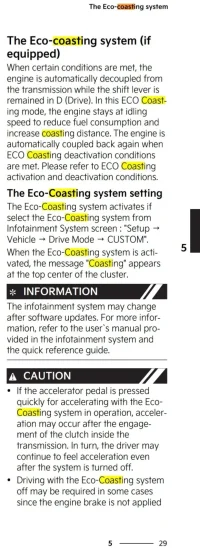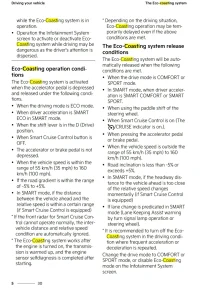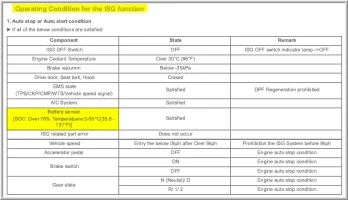No doubt it
can work, though I highly doubt all that different can be attributed solely to coasting. In fact, coasting likely contributed only a small part to your efficiency gain.
As I mentioned on page 1 of this thread, I have no problem getting 40+mpg in comfort mode. I tried enabling coasting, but in everyday driving, I find it interferes with my hypermiling habits. A good example of this is when the traffic ahead of me slows down, I usually let my foot off the accelerator pedal and just let engine braking naturally slow the car down gradually (all the while using ZERO fuel). If I time it just right, I quite often don't even have to touch the brakes before the traffic ahead picks up speed, and because I kept my speed up, I'm able to continue following the flow using as little throttle as possible.
With coasting enabled, there is no engine braking. Because of this, quite often my car would approach the traffic ahead of me without slowing down much. This can close the distance between me and the traffic ahead of me too fast, forcing me to tap the brakes, sometimes down to a complete stop. Now I have to accelerate, expending fuel to get back up to speed. Not only that, while the car is coasting, the engine is idling, which does burn a small (albeit not insignificant) amount of fuel to overcome internal friction to keep the engine running.
A lot of it comes down to traffic pattern and driving habits. All I can say is to try both and see which suits yours better.
That said, when coasting makes the biggest difference is... terrain. As usual, Jason at Engineering Explained does an excellent job describing this:






